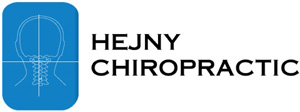 Several occupations pose a risk for spinal health problems. Interestingly, some are low-key culprits that cause subtle but noticeable effects on your spinal column. If not addressed early on, they can cause permanent and irreversible health problems like sciatica and nerve compression.
Several occupations pose a risk for spinal health problems. Interestingly, some are low-key culprits that cause subtle but noticeable effects on your spinal column. If not addressed early on, they can cause permanent and irreversible health problems like sciatica and nerve compression.
So if you feel any pain in your lower back, you would do yourself a great favor by having it checked as soon as possible. This way, you can be on your way to ensuring that your overall health is in check. All it takes is a bit of strong will so you can finally schedule your consultation with a seasoned Minnesota chiropractor for low back pain like Dr. Hejny.
Table of Contents
Understanding low back pain
Lower back pain is a usual complaint of many people. It traces its roots to several health concerns, including strained muscles, injured ligaments, widespread body stiffness, and sprained ligament. In some cases, low back pain develops an inflamed sciatic nerve, which doctors call sciatica. The sciatic nerve runs from the lumbar spine to tips of your toes. Hence, sciatica pain can radiate to other parts of your lower body.
Besides sciatica, lower back pain can also develop because of a herniated disc. This condition is fairly common among aging people because of the decreased quality and flexibility of the intervertebral discs, especially in the L1 to L5 vertebrae (lumbar spine).
Each vertebral bone comes with shock-absorbing discs that provide your spine with enough flexibility. When this disc gets injured, slips out of place, or ruptures, the material compresses nerves in the spinal column. This leads to lower back pain sensations in areas below the injured disc area. You may also experience radiating pain that extends into your buttocks or thighs.
What Triggers Low Back Pains at Work?
Sciatica, herniated disc, and other low back pain conditions often result from inactivity or a sedentary lifestyle, and sitting for long periods is one way to do it. Unfortunately, many jobs today require long work hours. Others also have to sit for several hours a day because of desk work, and commute to and from work. If that pretty much sums up your week, well, not only are you more prone to low back pains, but your overall health is in danger.
To learn more about the connection between head and neck injuries and low back pain, download our free e-book by clicking the image below.
How Can Prolonged Sitting Affect Your Health?
Here are all the things you need to know about the dangers of sitting too much and why you should refrain from getting stuck in the same routine.
- The average person sits for eight or more hours a day, putting extra stress on the back and other muscles.
- If you don’t take steps to reduce the stress, your back will become bent, stiff, and sore.
- A stiff back can lead to chronic pain that never goes away, even once you start standing up again.
- People with chronic back pain report cramping, motion range issues, and numbness on their lower backs to their feet due to sitting for too long.
- Back pain isn’t the only health issue with too much sitting. In fact, studies found evidence linking prolonged sitting to increased risks for heart diseases, high blood pressure, colon cancer, and type 2 diabetes.
Ways to Combat Low Back Pains At Work
If you have little control over how your job is structured or how many breaks you get, there are still things you can do to lower your risk:
- Take short but frequent breaks to stretch your back and neck muscles.
- Take some of your calls standing up.
- Try using the stairs during your work break.
- Get out at lunchtime for a walk (even better: take your whole team)
- Ensure that your chair is ergonomically correct for your body type and height.
- Do not bend or twist if you have to lift heavy objects; use proper lifting techniques to avoid over-stressing the lower back region after being stationary for some time.
- Refrain from over-snacking at work, and stay hydrated instead since fluid helps relieve muscle tension.
- Mind your posture as you sit at your desk.
- Tap into upper cervical chiropractic care to correct the spine misalignment and alleviate the steady pressure on your spine and nerves.
- Schedule regular assessment sessions with a chiropractor to monitor your spinal health and progress.
So whether you are hurting or would like to lower your risk of developing lower back pains, make sure you are getting up and moving around as often as possible, even during work hours! And after work, you can schedule to meet with a physical therapist or an upper cervical chiropractor for a consultation and cervical spine manipulation.
Looking For A Certified Minnesota Chiropractor For Low Back Pain?
If you have been suffering from low back pains for weeks and months now, you shouldn’t wait much longer before taking action; a chiropractor can help. Fortunately, it is not so difficult to find a verified Minnesota chiropractor for low back pain anymore – thanks to Hejny Chiropractic
Dr. Hejny is a Minnesota chiropractor for low back pain specializing in Atlas Orthogonal Chiropractic Care. Upper cervical chiropractic is an excellent option for people with mild to severe low back pain. It helps improve the spine’s function and movement and reduces pain sensations transmitted by the nervous system.
Hejny Chiropractic is open Mondays, Tuesdays, and Wednesdays from 8 am to 6 pm, and 8 am to 1 pm every Friday. You can book your appointment online or by phone at 763-230-0116.
To schedule a complimentary consultation with Dr. Hejny, call our Spring Lake Park office at 763-230-0116. You can also click the button below.
 If you are outside of the local area, you can find an Upper Cervical Doctor near you at www.uppercervicalawareness.com.
If you are outside of the local area, you can find an Upper Cervical Doctor near you at www.uppercervicalawareness.com.
